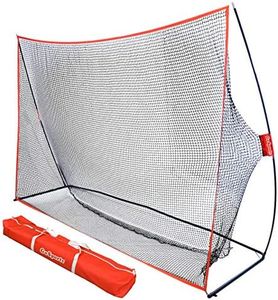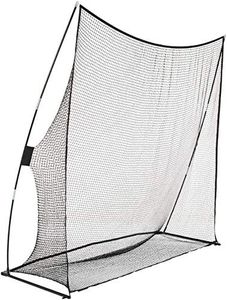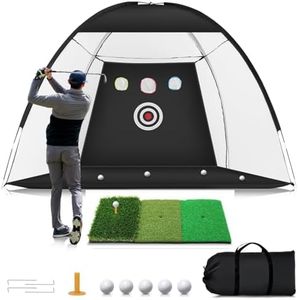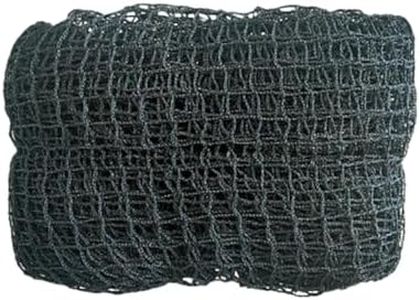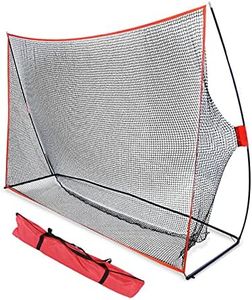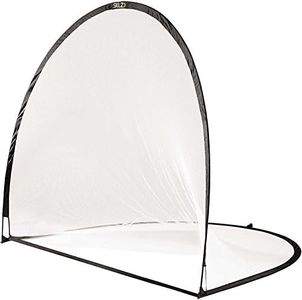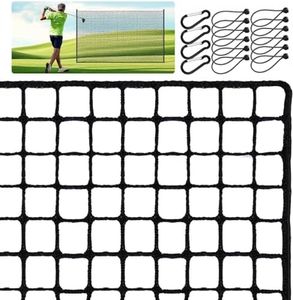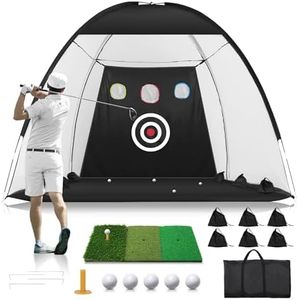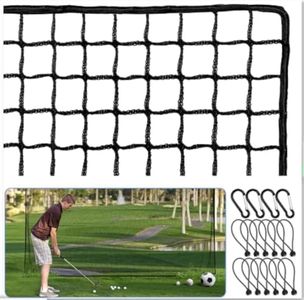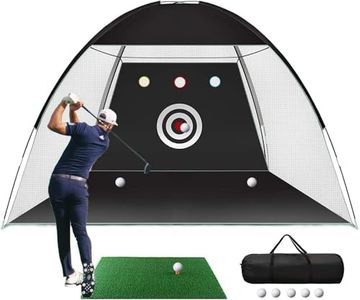We Use CookiesWe use cookies to enhance the security, performance,
functionality and for analytical and promotional activities. By continuing to browse this site you
are agreeing to our privacy policy
10 Best Golf Hitting Nets
From leading brands and best sellers available on the web.Buying Guide for the Best Golf Hitting Nets
Selecting the right golf-hitting net is all about matching the net's capabilities with your practice needs and the space where you'll be using it. Consider where you'll set it up, how often you'll use it, and what kind of golfer you are. A good net will help you practice effectively while keeping safety and durability in mind, ensuring you get the most out of your training sessions.Net SizeThe size of a golf-hitting net determines the area available for your shots and is essential for both safety and usability. Larger nets provide more catching area, which is helpful if you’re practicing powerful swings or are less accurate. Smaller nets can fit in tight spaces and are suitable for controlled practice but leave less room for errors. Consider your space and your skill level: if you're a beginner or practicing indoors, a larger net offers extra safety; if you’re advanced, a smaller net can suffice for focused drills.
Frame MaterialThe frame material affects the sturdiness and portability of the net. Common materials are steel, fiberglass, and sometimes plastic. Steel frames are robust and stable, suitable for heavy use, but can be heavier to move and set up. Fiberglass frames are lighter and flexible, easier to transport, and good for moderate use. Choose steel if you want long-term durability in one spot, and fiberglass or plastic if you expect to travel with your net or need quick setup and takedown.
Netting MaterialThe netting material impacts how well the net absorbs golf balls and how long it will last. Heavy-duty nylon or polyester nets are recommended for their durability against frequent or powerful shots. Lightweight nets may be cheaper but can wear out quickly. If you practice often or with real golf balls, prioritize a net with thick, tightly woven material so it can handle repeated impacts without tearing.
Set-up and PortabilityHow easy a net is to set up and move is important if you don’t have a permanent space for practice. Some nets pop up and collapse quickly, while others require assembly with poles and connectors. If you’ll be taking the net outdoors or storing it away between uses, look for one labeled as 'quick set-up' or 'portable.' If it will remain set up in a garage or backyard, sturdier, longer-assembly options can work.
Weather ResistanceWeather resistance matters if you plan to use the net outdoors. Nets with UV protection and rust-resistant frames will last longer in sun and rain. If your net will remain outside, check for materials and coatings that handle exposure to the elements, otherwise, indoor-specific nets can focus more on simplicity and less on weather durability.
Ball Return FeatureSome nets have a design or ramp that automatically returns the ball to you after each hit, which saves time and effort during practice. This feature is helpful for extended sessions, especially if you want to focus on rhythm and repetition. If convenience matters, look for nets with a ball return; if you’re okay retrieving balls yourself or only practice a bit at a time, this feature isn’t crucial.


